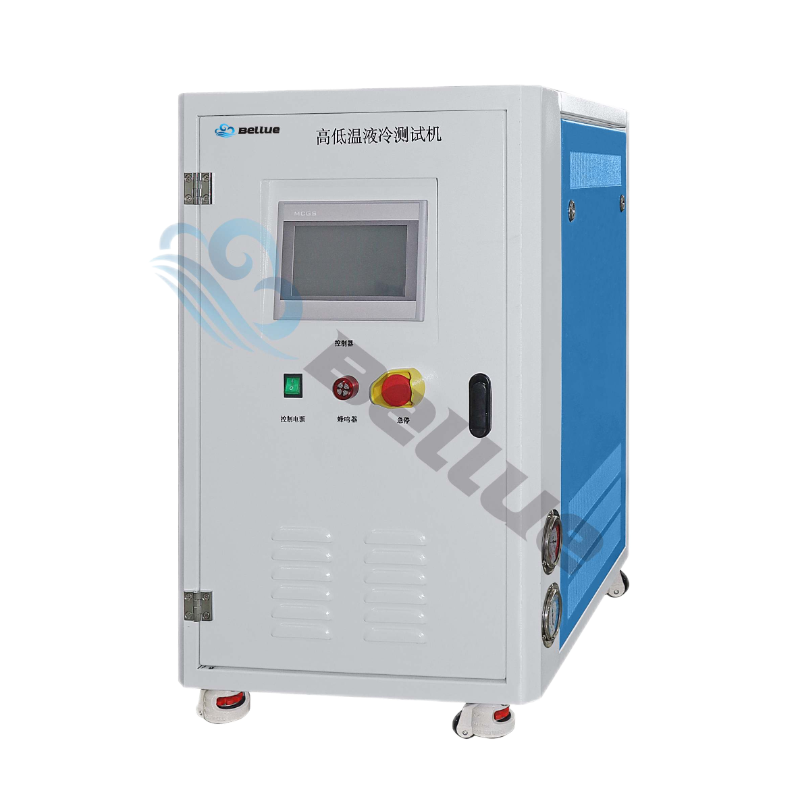Principle and construction of high and low temperature coolant testing machine
I. Introduction
With the continuous development of modern industrial technology, high and low temperature coolant testing machines are playing an increasingly important role in many fields, especially in automotive manufacturing, aerospace and new energy industries. This device is able to simulate a variety of extreme temperature conditions to accurately test the performance of the coolant. This article will deeply discuss the principle and construction of high and low temperature coolant testing machine to help readers better understand this key equipment.
Second, the working principle of high and low temperature coolant testing machine
The working principle of the high and low temperature coolant testing machine is mainly based on precise temperature control and fluid dynamics. Through advanced heating and cooling systems, the equipment is able to heat or cool the coolant to the required test temperature in a short time. At the same time, the high precision temperature sensor and control system ensure the stability and accuracy of the temperature during the test.
During the test, the coolant flows in a closed circulation system. The system consists of pumps, valves, pipes and radiators to ensure a uniform and continuous flow of coolant through the part being tested. By adjusting the speed of the pump and the opening of the valve, the flow and pressure of the coolant can be controlled to simulate different working conditions.
Third, the structure of high and low temperature coolant testing machine
1, heating and cooling system: this is the core part of the test machine, including heaters, refrigerators, temperature sensors and controllers. Heaters typically use electric heating elements that quickly heat the coolant to the desired temperature. The refrigerator is cooled by a compressor, which cools the cooling liquid to a low temperature state. The temperature sensor monitors the temperature of the coolant in real time and transmits the data to the controller to ensure accurate temperature control.
2, circulation system: composed of pumps, valves, pipes and radiators. The pump is responsible for driving the coolant to circulate in the system; The valve is used to adjust the flow and pressure of the coolant; Pipes connect various components to ensure the smooth flow of coolant; The heat sink is used to dissipate the heat generated during the test and maintain the thermal balance of the system.

3, control and display system: including microprocessor, touch screen and other electronic components. The microprocessor receives the signal from the temperature sensor and controls the operation of the heater and cooler according to a preset test procedure. The touch screen provides an intuitive user interface that allows operators to set test parameters, monitor the test process, and view test results.
4, safety and protection system: In order to ensure the safe operation of the equipment, the high and low temperature coolant testing machine is also equipped with multiple safety protection measures. For example, the overheat protector can automatically cut off the power supply if the device overheats; The pressure sensor can monitor the pressure change of the system to prevent the pressure from being too high or too low; The leakage protector can quickly cut off the power supply when the equipment leaks, ensuring the safety of the operator.
Iv. Conclusion
High and low temperature coolant testing machine is a highly complex and precise equipment, its working principle and construction involve the knowledge of many disciplines. By gaining an in-depth understanding of its working principles and construction, we can better understand and appreciate this masterpiece of modern industrial technology. At the same time, this also provides a strong support for us to give full play to its performance advantages in practical applications.
Energy storage liquid cooling temperature control technology application advantages
How to derive the test results of high and low temperature coolant tester
High and low temperature coolant test electrical source circuit connection method
The problem of water source during the use of high and low temperature coolant testing machine
Coolant filling and discharging method of battery module high and low temperature liquid cooling test machine
High and low temperature liquid cooling test machine solutions
